Recent Fire Damage Posts
Fire Safety Essentials
9/3/2024 (Permalink)
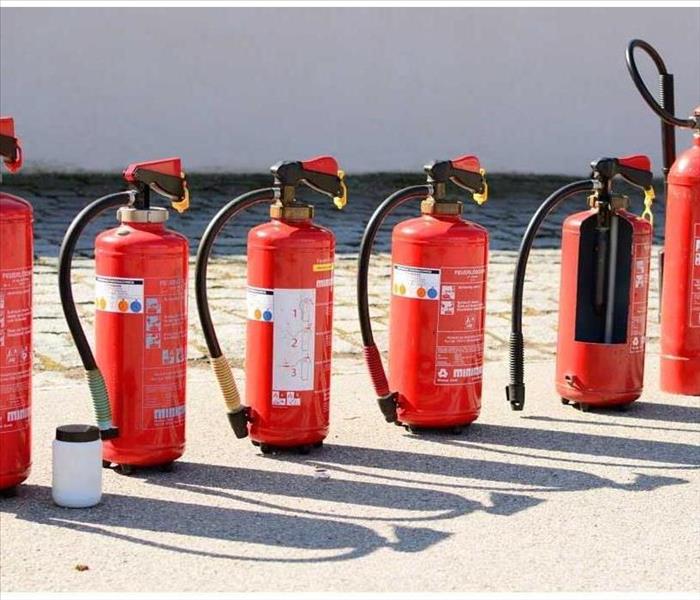 seven fire extinguishers on the beach
seven fire extinguishers on the beach
Did you know that nearly half of all residential fires start in the kitchen? Cooking accidents, heating appliances, and electrical malfunctions are the top culprits. But when a fire sparks, spraying water isn’t always the safest solution. In fact, using water on an electrical fire can have dangerous consequences.
That’s why every home should be equipped with a Class ABC fire extinguisher. This type of extinguisher is versatile, capable of handling fires involving solid materials, flammable liquids, and electrical equipment. Make sure you have one under your kitchen sink, in the laundry room, and in the garage to ensure you’re prepared for any emergency.
If a fire does occur, SERVPRO Team Majeski is Here to Help® you restore your home to its original state. Contact us today at 732-578-9888.
Aftermath of Fire Damage
9/7/2023 (Permalink)
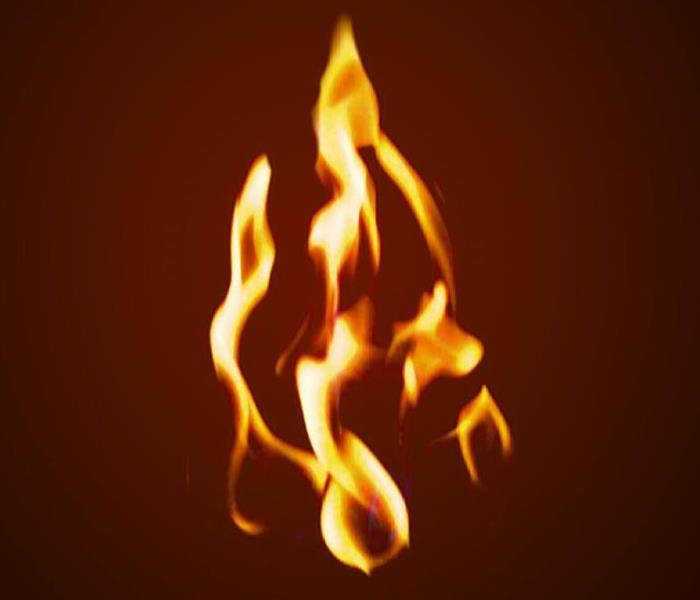 fire flames in front of dark background
fire flames in front of dark background
Dealing with the aftermath of fire damage to your home can be an overwhelming and stressful experience. It's tempting to postpone the restoration process, but that can lead to even more extensive damage. That's why you need caring professionals with experience to guide you through this crisis. At SERVPRO® of Jersey City North, The Heights, we treat you with respect and empathy, ensuring that your home and belongings are handled with the utmost care.
Postponing fire restoration can allow the extent of destruction and damage to your home to worsen. The longer you wait, the more repairs you may need, making restoration a top priority. Our team is available 24/7, ready to respond to your disaster as quickly as possible.
Immediate action is crucial when dealing with fire damage. A fast response helps minimize damage, limits secondary issues, and reduces costs. At SERVPRO® of Jersey City North, The Heights is dedicated to responding promptly when you need assistance. Our highly trained fire damage restoration technicians have the expertise and advanced training to restore your property quickly and thoroughly.
We focus on restoring rather than replacing because it's often less costly and disruptive. This "restore first" mentality allows us to return your home or business to pre-fire condition faster.
As a locally owned and operated business, we are part of the community and ready to respond to your smoke or fire damage emergency.
Our fire damage restoration services are tailored to each situation but generally follow the same process. This includes:
- Emergency Contact
- Inspection and Fire Damage Assessment
- Immediate Board-Up and Roof Tarp Service (if needed)
- Water Removal and Drying (if water damage is present)
- Removal of Smoke and Soot from All Surfaces
- Cleaning and Repair
- Restoration
When you're facing fire damage, trust the professionals at SERVPRO® of Jersey City North, The Heights to restore your property with care and expertise.
How to use a Fire Extinguisher
3/31/2022 (Permalink)
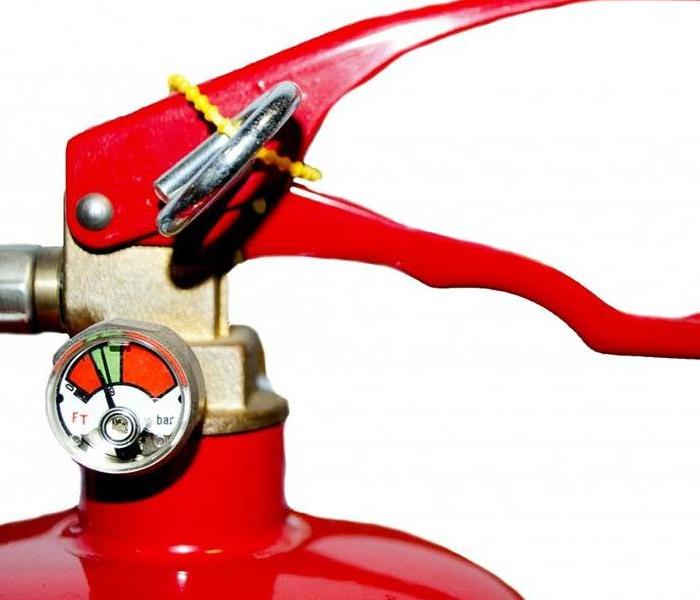 A close-up photo of a fire extinguisher handle.
A close-up photo of a fire extinguisher handle.
In a prior blog, we discussed the acronym R.A.C.E. which represents the steps to take in care of a fire. Those steps are Rescue, Alarm, Contain, and Extinguish. Another acronym used in training for a fire response is P.A.S.S. which stands for Pull, Aim, Squeeze, and Sweep. These are the steps for using a fire extinguisher.
First, you want to make sure you have the correct fire extinguisher. In most settings, an ABC class extinguisher is most common. An ABC extinguisher puts out most fires including:
Class A fires – common materials including wood which typically produce Ashes.
Class B fires – flammable liquids that are typically stored in a Barrel, such as gasoline.
Class C fires – electrical fires that have an electrical Current
Fires that require a more specialized type of extinguisher include class D fires which are flammable metal or class K fires which are high temperature cooking oil fires.
The steps for using a fire extinguisher are:
P: Pull the pin that prevents the extinguisher from discharging accidentally.
A: Aim the nozzle at the base of the fire
S: Squeeze the handle/trigger to discharge the extinguishing agent
S: Sweep the nozzle back and forth to cover the burning material
What to do in case of a fire
3/30/2022 (Permalink)
 Jersey City, NJ firefighters and equipment in action.
Jersey City, NJ firefighters and equipment in action.
What should you do if you encounter a fire in your home or business? The common acronym R.A.C.E. provides some helpful guidelines. This stands for Rescue, Alarm, Contain, and Extinguish. These are the priority actions that should be taken. Unfortunately, they are often not followed in a panic as people typically try to fight the fire themselves, which costs precious time.
Rescue – The priority is life safety. Smoke and other deadly products of combustion can incapacitate an individual with just a few breaths. The top priority is rescuing anyone who is in personal danger.
Alarm – Sound the alarm by hitting the fire button on your alarm system or calling 911. A fire doubles in size every 45 seconds so alerting the fire department to begin their response is your second priority.
Contain – Stopping the spread of the fire is even more important than trying to extinguish the fire. Closing doors is a simple and effective way of stabilizing the scene and limiting fire spread. Moving a car away from a burning shed or using a garden hose to spray the vinyl siding next to a grill fire can likewise stop the fire from spreading and causing significantly more damage. All of these actions should only be attempted if they can be done safely.
Extinguish – Only after the first three actions have been completed should you attempt to extinguish the fire. Again, only if it can be done safely. Keep in mind that different types of fires (electrical, grease, gas-fed) may require special techniques to extinguish. At a minimum, every home and business should have an ABC class fire extinguisher handy as this is the most versatile type of extinguisher.
Of course, once the fire is extinguished, call SERVPRO because a quick response and immediate action can reduce the extent of smoke, water, and other damage.
Preventing Workplace Fires
2/27/2022 (Permalink)
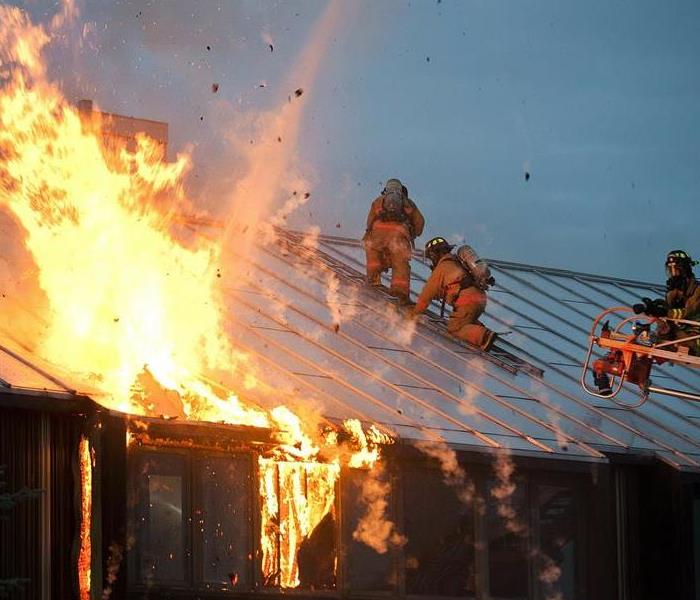 Firefighters battle a heavy fire in a commercial building.
Firefighters battle a heavy fire in a commercial building.
Fire Safety in the workplace is important all year round and our team here at SERVPRO of Jersey City North/The Heights would like to review workplace fire prevention & safety.
Here is a top-10 of tips to ensure a fire-safe workplace:
Step 1. Get Organized– Practice good workplace housekeeping. Clutter contributes to fires by providing fuel and by preventing access to exits and emergency equipment.
Step 2. Designated Smoking Areas – Smoke only in designated areas and extinguish smoking materials safely. Never smoke in storerooms or chemical storage areas.
Step 3. Fire Extinguishers – Maintaining the appropriate type and number of fire extinguishers and learning how to properly use a fire extinguisher.
Step 4. Electrical Hazards – Report all electrical hazards. Many fires start in faulty wiring and malfunctioning electrical equipment.
Step 5. Access to Control Panels – Electrical control panels need to have free access maintained so that the electricity could be shut off easily.
Step 6. Sprinkler Systems & Smoke Detectors – Never block sprinklers, firefighting equipment, or emergency exits. Observe clearances when stacking materials. Test sprinkler systems and smoke detectors at least annually.
Step 7. Chemical Safety – Use and store chemicals safely. Read the label and the Safety Data Sheet to determine flammability and other fire hazards. Provide adequate ventilation when using and storing these substances.
Step 8. Waste Control & Storage – Control the accumulations of flammable and combustible waste materials and residues so that they do not contribute to a fire emergency.
Step 9. Exits – Emergency exit diagrams should be posted and emergency exits should be well lit with neon-regulation signs.
Step 10. Contact Info – Employees should have a list of emergency contact phone numbers in case of emergency. Remember that people will often panic in an intense situation; therefore basics such as the company address, phone number, and floor plan should be posted. The SERVPRO Emergency Ready Plan app is a great tool for collecting, storing, and sharing this information.
For additional information or a free consultation, please call us today.
Smoke Damage Requires Professional Help
1/31/2022 (Permalink)
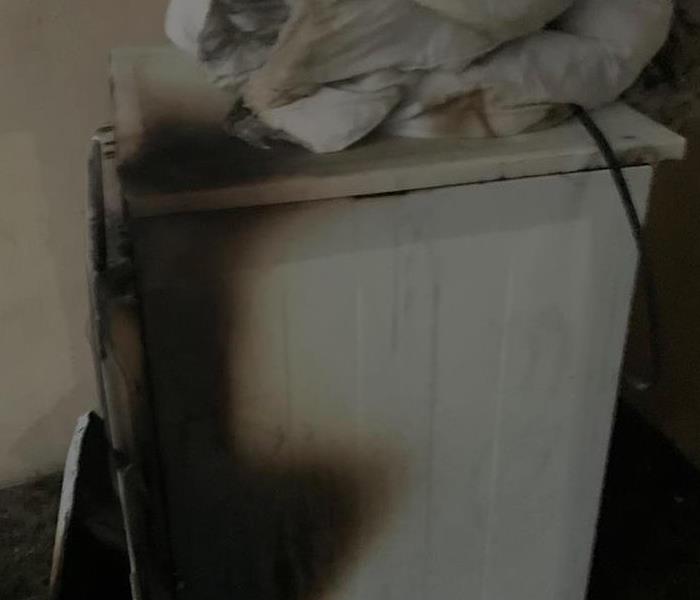 The aftermath of a dryer fire in NJ.
The aftermath of a dryer fire in NJ.
Smoke damage can make your home a dirty, smelling mess. Whether you’ve suffered a major fire catastrophe or had smoke damage accumulate from the presence of fire in your home, you want to start cleaning up smoke stains as soon as you can in order to prevent permanent damage.
Our team at SERVPRO of Jersey City North/The Heights has seen our share of fire incidents as Professional Cleaning and Restoration Leaders in this community so, we know what smoke damage can do to a home.
Make Sure the Area is Safe
If your incident was a small kitchen grease fire, there is probably minimal risk. However, if the fire burned through a significant section of your home, you want to be sure the area you enter is structurally sound and cleared by officials before anyone can attempt to start fixing it.
Dispose of Everything that Can’t Be Salvaged
The first step of the cleaning process is to get rid of everything that can’t be saved.
Be especially wary of food that may have been contaminated, plastics that may have melted, or materials that are too stained to be cleaned.
Vacuum Up Debris
We have specialized equipment to clean up debris.
Soot is greasy, it is best to wait for a professional to clean soot-stained surfaces than make a bigger mess.
Clean up Odors
You can clean some fabric and upholstery yourself that may have avoided smoke stains may still have absorbed odors.
If you have fabrics that are dry clean only, be sure to take them to a dry cleaner that specializes in smoke removal or fire treatment.
For fabrics that can go in a washing machine, add a cup of white vinegar and a cup of baking soda to your regular load to clean the smoke damage. A mixture of white vinegar and baking soda can also be used to spot clean carpeting and upholstery.
Seal Surfaces
Even after a full cleaning, there may still be some lingering stains and odors. To mitigate this, we use a sealing primer.
We use specialized sealers for different surfaces. For example, on painted walls, we use a stain concealing primer followed by a topcoat of latex paint. For wooden surfaces, we use a sealer designed specifically for wood or particleboard.
If you need professional assistance in cleaning up after a fire incident, SERVPRO of Jersey City North/The Heights is here to help. Our specialized technicians have the advanced training and equipment needed to clean and restore your property, helping you get your life and property back to normal ASAP.




 24/7 Emergency Service
24/7 Emergency Service





